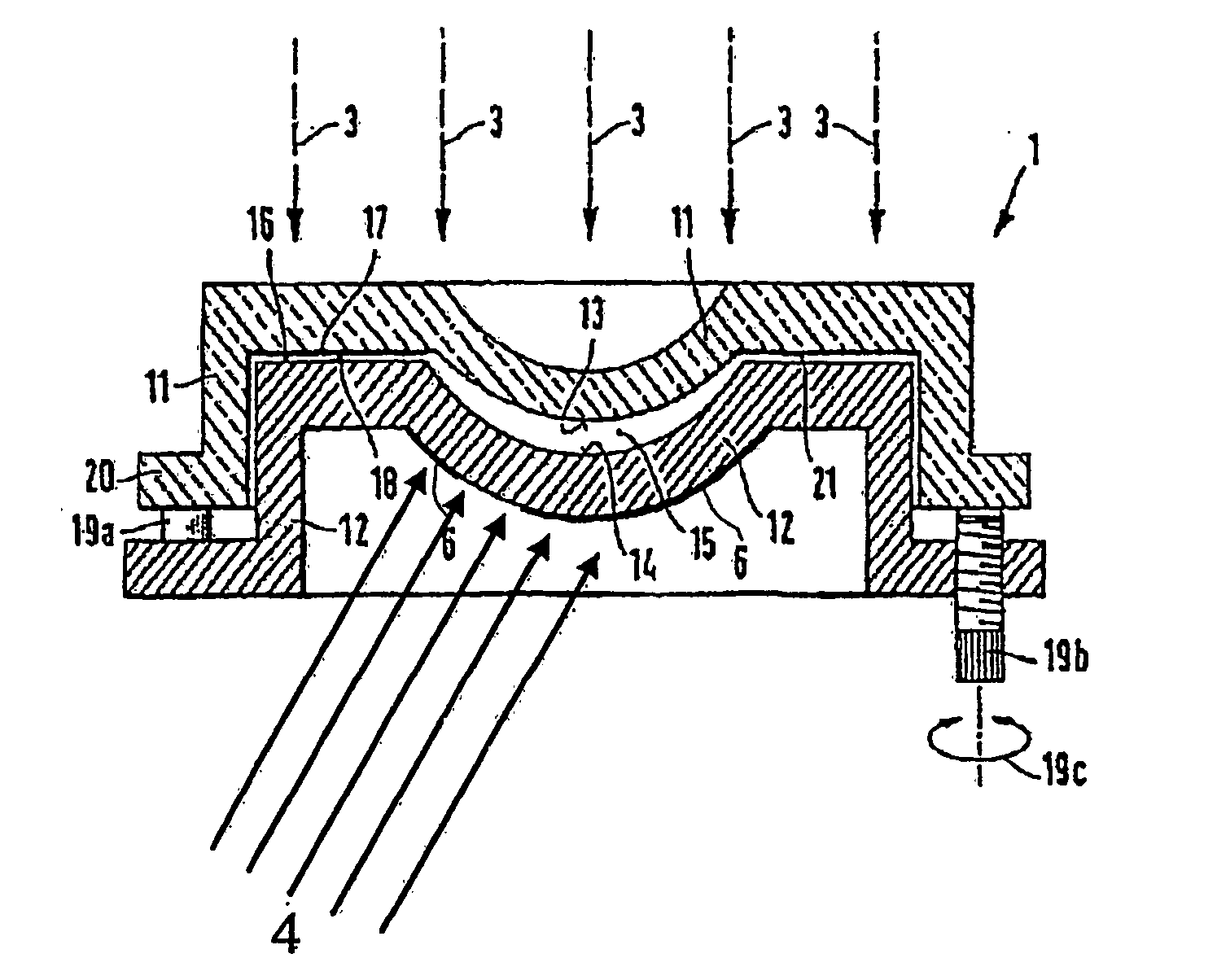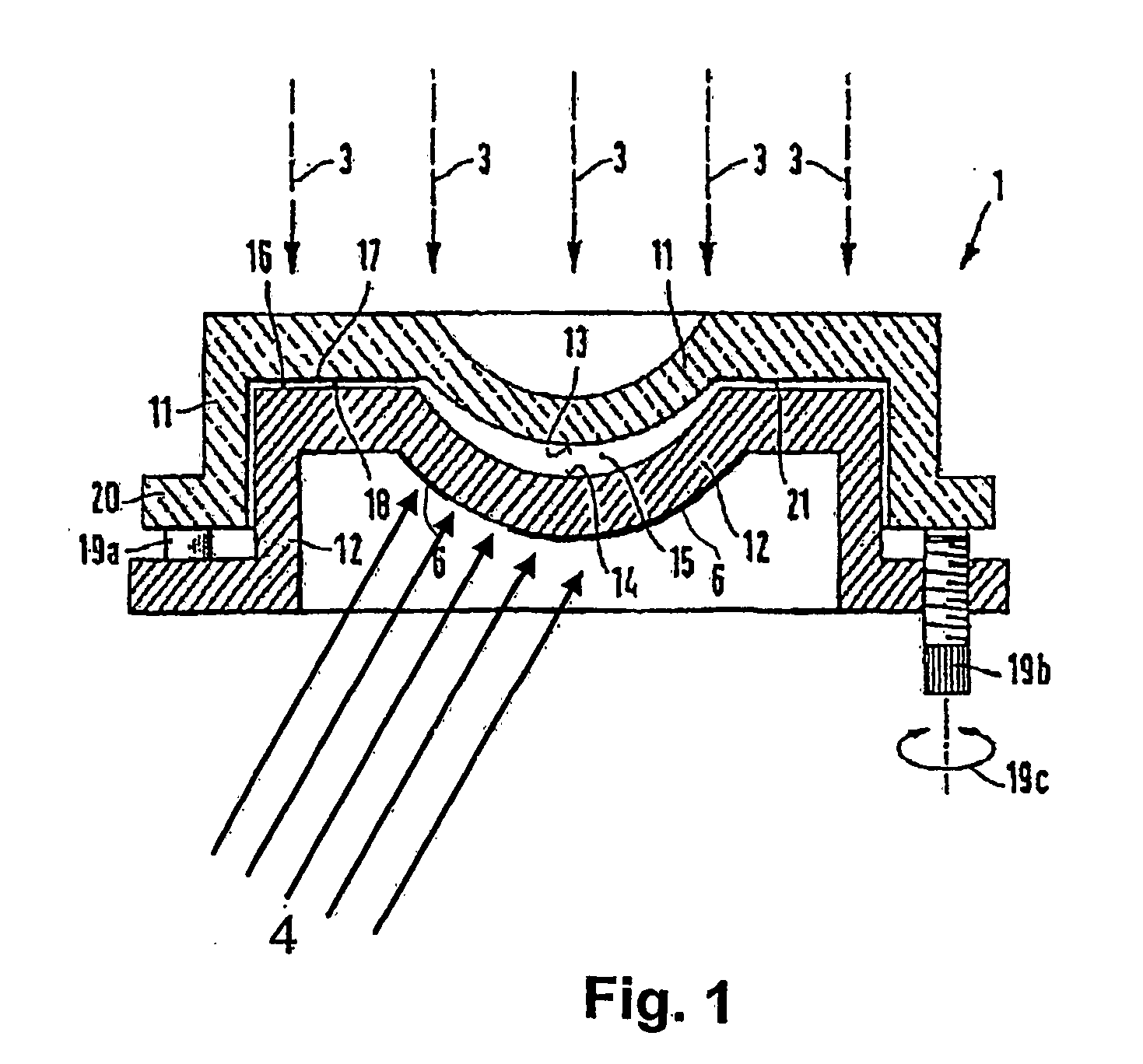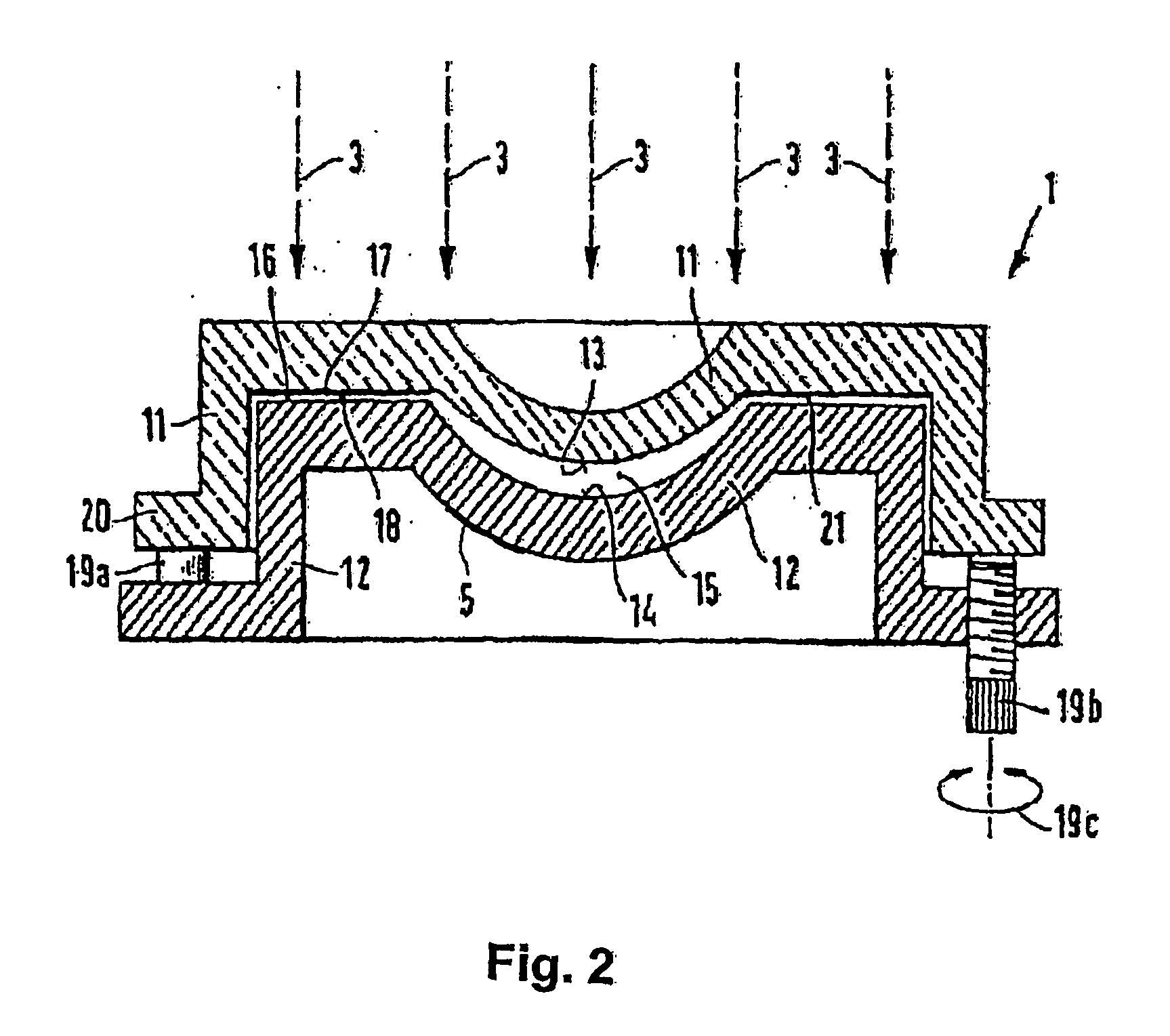Reflection hologram sensor in contact lens
- Summary
- Abstract
- Description
- Claims
- Application Information
AI Technical Summary
Benefits of technology
Problems solved by technology
Method used
Image
Examples
example 1
Synthesis of Polyvinylalcohol Macromers (Macromers 1-5)
[0176] 1. 45 ml ultra pure water and 20 ml DMSO are added in a 250 ml three neck bottom flask, equipped with thermometer and heated to 60° C. on a water bath. [0177] 2. About 9.7 g of Mowiol™ 383 (which is available from Hoechst Celanese Corp. NC) is added to the water. The mixture is heated to 90° C. under stirring until a clear solution is obtained. The solution is allowed to cool to 25° C. [0178] 3. An amount of an aromatic material (listed and specified in Table 1) is added into the solution. The reaction mixture is heated to 60° C. until homogeneous and cool again to the room temperature. [0179] 4. About 0.8 g of N-acrylamido acetaldehyde dimethyl acetal is added, followed by 6.467 g (5.43 ml) HCl (37%) quickly poured into solution. Stirring for 7 hours. (N-acrylamido acetaldehyde dimethyl acetal is obtained by the reaction of aminoacetaldehyde dimethylacetal (Aldrich) with methacryloyl chloride (Aldrich). The reaction is ...
example 2
[0184] Dried PVA is obtained by precipitation of Nelficon formulation twice into a 150 ml mixture of water acetone ( 3 / 10% v:v) under stirring for 30 minutes. The filtrate is washed with 100 ml acetone and dried overnight at 40° C.
[0185] Nelfilcon macromer or dried PVA macromers are formulated with additional salt, photoinhibitor and solvent according to compositions specified in Tables 3-4.
[0186] The resulting formulations are placed between two quartz slides separated by 50 microns with spacers and holograms are recorded.
[0187] Percent efficiencies of the 50 microns thick holograms are determined by dividing the energy of the selected mode by the energy of the incident light.
TABLE 3Formulations based on Nelfilcon containing various amountsof NaCl and photoinitiatorNelfilcon*NaClIrgacureEfficiency**Formulation[g][g]2959 [mg][%]205950.025—40206850.05—23206950.25—652085-150.252070211050.251535211150.251030211250.25530211350.252.537
*amount of component normalized to 5 g Nelfilcon...
PUM
| Property | Measurement | Unit |
|---|---|---|
| Fraction | aaaaa | aaaaa |
| Density | aaaaa | aaaaa |
| Solubility (mass) | aaaaa | aaaaa |
Abstract
Description
Claims
Application Information
 Login to View More
Login to View More - R&D
- Intellectual Property
- Life Sciences
- Materials
- Tech Scout
- Unparalleled Data Quality
- Higher Quality Content
- 60% Fewer Hallucinations
Browse by: Latest US Patents, China's latest patents, Technical Efficacy Thesaurus, Application Domain, Technology Topic, Popular Technical Reports.
© 2025 PatSnap. All rights reserved.Legal|Privacy policy|Modern Slavery Act Transparency Statement|Sitemap|About US| Contact US: help@patsnap.com



